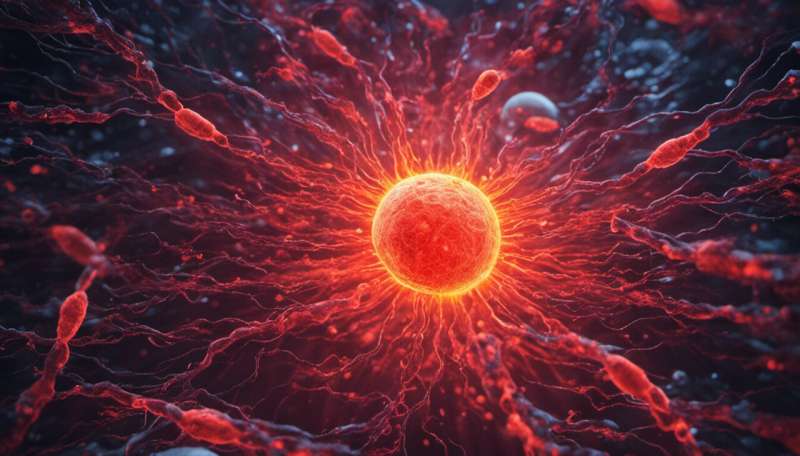Cancer biology: Keeping bad company

The p53 tumor suppressor protein manages DNA repair mechanisms in response to genetic damage and kills off precancerous cells before they multiply. The loss of p53 due to mutation greatly increases risk of tumorigenesis. Even worse, however, are the various 'missense' mutations that change the amino acid sequence of p53: they warp its function to promote rather than prevent cancer.
"Mutated forms of p53 are found in 50% of human cancers," says Jayantha Gunaratne of the A*STAR Institute of Molecular and Cell Biology. "We hypothesized that mutant p53 proteins interact with selected proteins that do not bind to wild-type p53 to promote processes involved in cancer progression." To test this theory, Gunaratne teamed up with colleagues including David Lane, chief scientist of A*STAR and one of the initial discoverers of p53, to hunt for binding partners that specifically interact with the common p53R273H mutant.
The researchers used stable isotopes to label all the proteins in cultured cells expressing either wild-type p53 or p53R273H. Then they used a technique called mass spectrometry that enabled them to accurately catalogue the subset of proteins associated with either p53 variant. "We captured at least 15 protein binding partners specific to the p53R273H mutant," says Gunaratne. Among the most immediately interesting was a protein called nardilysin (NRD1), which is associated with the invasive growth and migratory behavior observed in aggressive cancers.
After determining that NRD1 exclusively binds p53R273H but not to other p53 mutants, Gunaratne and co-workers proceeded to explore how it specifically collaborates with this variant. By selectively reducing the expression of NRD1 in cultured cancer cells, they learned that this protein is a critical component of the invasive behavior manifested by p53R273H-expressing cells in response to a particular chemical trigger, a cellular signal called heparin-binding epidermal growth factor-like growth factor (HB-EGF). This HB-EGF-oriented invasion appears to occur via a cellular mechanism distinct from those that direct cell movement in response to other growth factors, indicating a novel biological process involving both p53R273H and NRD1 that needs further elucidation.
Abnormal production of HB-EGF manifests in a broad array of cancers. Gunaratne and co-workers are intrigued by the possibility that NRD1 might therefore represent a critical factor involved in tumor spread. "This study indicates that molecules that modulate NRD1 or other p53 mutant-specific protein partners could offer an exciting and defined therapeutic approach to reduce cancer metastasis," says Gunaratne.
More information: Coffill, C., et al. Mutant p53 interactome identifies nardilysin as a p53R273H-specific binding partner that promotes invasion. EMBO Reports 13, 638–644 (2012). www.nature.com/embor/journal/v … bs/embor201274a.html














